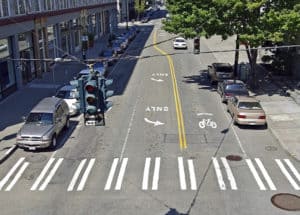
In Washington State, all automobile insurance policies are required to include Personal Injury Protection (PIP).[1] PIP provides medical coverage, regardless of the fault of the injured party, up to a minimum of $10,000.00, and covers the driver as well as household family members. [2] An insured may also change PIP coverage with a documented request that coverage limits be increased to $35,000.00[3], with a corresponding increase in premium. We have also seen some instances of PIP policies as large as $50,000.00 and $100,000.00 in coverage.
Unfortunately, PIP coverage may also be rejected in writing. If your patient thinks that they have PIP coverage, but are told by their insurer that the patient declined this coverage, the patient should request that the insurer produce a copy of the written or electronic waiver. By law, all insurers are required to keep written proof that the insured rejected this coverage. If the insurance company can’t produce a copy of the written waiver, then your patient automatically has the minimum PIP coverage of $10,000.00 under Washington law.
If your patient has PIP, and only has the $10,000.00 minimum coverage, it’s worthy of a discussion with your patient to inform them that they can purchase additional PIP coverage. The basic $10,000.00 in PIP coverage can be exhausted very quickly with just a short hospital stay, diagnostic imaging or any injury requiring prolonged treatment. The insurance company will charge an additional premium for this increased PIP coverage, but the cost[4] is surprisingly small for what can amount to 3.5 times the minimum coverage. While this increase in coverage only applies going forward, if your patient is involved in a future collision, they will benefit from the additional coverage. In many cases, that increase in PIP coverage can make all the difference in your patient deciding whether to stop treatment because PIP is exhausted and they may not have sufficient coverage under their health insurance.
PIP: it’s not just while you’re in a car. . .
What’s not as well known is that an at-fault driver’s own PIP insurance covers pedestrians and even bicycle riders they injure with their automobile. Most injured pedestrians and bicyclists incorrectly assume that if they’re injured by an automobile, the at-fault driver’s insurance company won’t pay for the medical expenses while treatment is happening. That’s why it’s critical for your patient to find out if the at-fault driver had PIP coverage. We recommend advising your patient to make the request for this information in writing to the at-fault driver’s insurance company.
If PIP benefits are available in this situation, you should first bill the at-fault party’s insurer for all medical treatment related to the collision, even if your patient has their own PIP coverage. If your patient also has PIP under their own policy, then there’s coverage available under two PIP policies – in essence the policies “stack.” The at-fault party’s PIP coverage is primary, and when that coverage is exhausted, the patient’s PIP coverage will begin to pay.
PIP, pedestrians, and paying back the insurance companies:
Patients injured as a pedestrian or bicyclist used to have to pay the PIP insurer back 100% of the benefits received when the liability claim settled.[5] Making an injured party pay back PIP benefits out of a settlement seemed patently unfair. Fortunately, the Washington Supreme Court dealt directly with this issue and held that if the injured party is represented by an attorney, the PIP insurer must reduce reimbursement by at least 33% and a percentage of the case costs.[6]
At Adler Giersch, we’re always available to help you and your patients with any PIP-related questions that come up. Please don’t hesitate to contact us.
[1] RCW 48.22.085.
[2] RCW 48.22.095. This coverage also includes funeral expenses up to $2,000.00, income continuation benefits up to $10,000.00 (max of $200/week) and loss of services benefits up to $5,000.00 (max of $200/week).
[3] RCW 48.22.100. This coverage also includes funeral expenses up to $2,000.00, income continuation benefits up to $35,000.00 (max of $700/week) and loss of services benefits up to $14,600.00.
[4] My own PIP policy increased only another $2/month when I increased my PIP coverage from $25,000.00 to $50,000.00. Insurance companies typically charge anywhere from $25-$50 every policy period to increase this coverage to $35,000.00 so the cost is really minimal compared to the benefit.
[5] Typically, when an injured party receives medical benefits under their own PIP and/or health insurance policy (1st party coverage) and is represented by an attorney, when the claim settles with the at-fault party’s (3rd party) insurance company, Washington law states that the subrogation amount claimed by the 1st party insurers can be reduced by 33% and a pro-rata share of the costs incurred by the attorney.
[6] Matsyuk v. State Farm Fire & Casualty Co., 173 Wn.2d 643, 272 P.2d 802 (2012)
